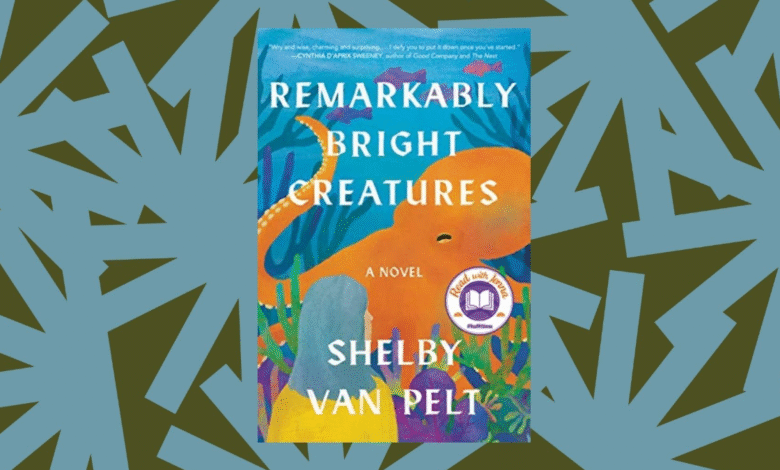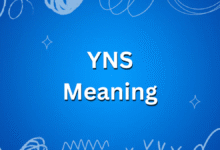Remarkably Bright Creatures: An Unexpected Dive into Intelligence Beyond the Human Gaze

Discover the world of remarkably bright creatures – from octopuses to elephants. Explore intelligence in the animal kingdom, storytelling, behavior, and emotional connection in this deep, insightful guide.
Introduction: The Meaning Behind “Remarkably Bright Creatures”
When we hear the phrase “remarkably bright creatures,” our minds often race to human genius or technological marvels. But this term has taken on new meaning in recent years, referring not to humans, but to the surprising, underestimated intelligence found in animals. These are the beings living among us, or often far beneath the waves, quietly solving puzzles, forming relationships, and challenging what we thought we knew about cognition and emotion.
The term gained cultural traction thanks to literature and media, especially the bestselling novel Remarkably Bright Creatures by Shelby Van Pelt, which featured a giant Pacific octopus with astonishing insight. But beyond fiction, real-life evidence continues to suggest that intelligence is far more widespread in the natural world than we ever imagined. This article will take you through the different layers of what makes these animals “remarkably bright,” explore how science is reshaping our understanding, and even dive into the emotional and philosophical implications of recognizing animal intelligence.
The Science of Intelligence in Animals
Animal intelligence is a subject that has fascinated scientists and philosophers for centuries. But only in the last few decades have we started to seriously question the long-held belief that humans sit unchallenged at the top of the intelligence hierarchy. Through cognitive experiments, behavioral observation, and neurological research, we’re slowly discovering that remarkably bright creatures aren’t exceptions – they’re more common than we thought.
One standout example is the cephalopod family, particularly the octopus. These creatures exhibit problem-solving abilities, tool use, memory retention, and even what appears to be play. Elephants, parrots, dolphins, and even crows have demonstrated similarly complex behavior. Intelligence, it turns out, is not a single trait. It can look different depending on the environment, the species, and the evolutionary pressures at play.
Neurologically, animals like octopuses have massive brain-to-body ratios, with neuron distributions spread even into their arms. Elephants exhibit mourning behavior, crows can recognize human faces, and dolphins give themselves unique names through signature whistles. If that’s not “remarkably bright,” what is?
Emotional Depth and Social Intelligence
One of the most compelling aspects of these remarkably bright creatures is not just their ability to solve problems, but their capacity to form emotional connections. Animals like elephants have been observed mourning their dead, forming life-long family bonds, and even experiencing what appears to be post-traumatic stress. These are not just reflexive actions; they suggest a deeper emotional and psychological complexity.
In dolphins, orcas, and even some birds like African grey parrots, there is a clear capacity for social communication. These animals not only interact with each other through specific vocalizations, but they also appear to understand social dynamics, group hierarchies, and individual relationships. This kind of intelligence is hard to quantify, but it’s undeniable when you see a chimpanzee comforting another or a dolphin rescuing a human from danger.
So, the next time you interact with a pet or spot wildlife in nature, remember: you’re likely looking at a remarkably bright creature with feelings, memories, and motivations not too dissimilar from your own.
Remarkably Bright Creatures in Literature and Culture
The phrase “remarkably bright creatures” found new life and meaning in Shelby Van Pelt’s debut novel of the same name. The book features an elderly woman and a curiously observant octopus, blending elements of mystery, grief, and unlikely friendship. While the story is fictional, it beautifully mirrors the real-world intelligence of octopuses and invites readers to rethink how we perceive non-human life.
This blending of fiction and science has a long tradition. From the clever mice of The Hitchhiker’s Guide to the Galaxy to the intelligent apes of Planet of the Apes, popular media has often used animals as a mirror for human intelligence. These stories ask, sometimes directly and sometimes subtly: what if we’re not the only ones with rich inner lives?
By using animals as characters with thoughts, motivations, and emotions, storytellers are reinforcing what scientists are increasingly proving—that these creatures are indeed remarkably bright. The cultural shift in how we portray and perceive animal intelligence reflects a broader awakening to their importance, both ecologically and morally.
Evolutionary Advantages of Animal Intelligence
Why are certain animals so intelligent? The answer often lies in evolutionary pressures. Intelligence in animals usually evolves not for the sake of complexity, but for survival. For example, octopuses use their intelligence to camouflage, escape predators, and hunt efficiently. Their short lifespans and solitary lives may surprise us given their high intelligence, but these very conditions could be what drive their cognitive development.
In mammals, especially primates, dolphins, and elephants, intelligence is often linked to social living. Animals in complex societies benefit from remembering individuals, forming alliances, and predicting others’ behavior. These skills require a level of brain power that, over time, becomes embedded in the species’ evolutionary toolkit.
This evolutionary perspective helps explain why remarkably bright creatures can appear across very different taxonomic groups. Intelligence, like wings or eyes, can evolve independently in unrelated lineages when it provides a strong survival advantage.
Famous Remarkably Bright Creatures in Research
Many animals have gained fame not just in pop culture, but in scientific circles, for demonstrating remarkable intelligence. One such example is Alex, the African grey parrot studied by Dr. Irene Pepperberg. Alex could identify colors, count, and even express frustration. His cognitive abilities stunned the scientific world and reshaped our understanding of bird intelligence.
Another standout is Koko the gorilla, who was taught a modified version of American Sign Language. Koko formed strong emotional bonds, expressed grief, and even kept a pet cat. Although some debate remains about the true nature of her language use, her emotional expressiveness was never in question.
And of course, there are countless unnamed octopuses in labs and aquariums that have escaped enclosures, unscrewed jars, and completed puzzles. These creatures aren’t just smart for animals; they’re remarkably bright in ways that sometimes even surpass our expectations.
Tables of Intelligence: Comparing the Brightest Creatures
| Animal | Known Abilities | Remarkable Traits |
|---|---|---|
| Octopus | Problem-solving, escape artistry | Independent brain in each arm, camouflage |
| Dolphin | Self-awareness, vocal learning | Signature whistles, complex social behavior |
| Elephant | Mourning, memory, empathy | Can recognize themselves in mirrors |
| African Grey Parrot | Speech mimicry, counting, color ID | Demonstrated logical reasoning |
| Crow | Tool use, facial recognition | Can plan for future events |
| Chimpanzee | Tool crafting, social strategy | Political intelligence in groups |
These are just a handful of creatures that defy our expectations and force us to reconsider what it means to be intelligent. Each one showcases a different kind of brilliance, adapted to its own ecological niche.
Ethical Considerations: Knowing They’re Bright, What Now?

Understanding that we share the planet with remarkably bright creatures brings with it a moral responsibility. If animals feel, think, plan, and remember, then how we treat them in zoos, research facilities, farms, and wild habitats becomes a deeply ethical question.
Many countries have begun updating their animal welfare laws in light of new research on animal cognition. Some places now recognize animals like octopuses and lobsters as sentient beings, deserving of humane treatment even before slaughter. Public pressure is mounting to phase out practices that cause suffering in intelligent species.
We cannot claim ignorance anymore. Knowing that these creatures experience the world in complex, meaningful ways means we are accountable for how our actions affect them. Whether it’s eating less meat, supporting ethical research, or simply respecting wildlife, awareness is the first step toward change.
Quotes That Capture the Essence
“The question is not, Can they reason? nor, Can they talk? but, Can they suffer?” — Jeremy Bentham
“When you look into the eyes of an animal you’ve helped, there’s no mistaking the gratitude and connection.” — Unknown
“Some people talk to animals. Not many listen though. That’s the problem.” — A.A. Milne
Frequently Asked Questions
Q: What animals are considered remarkably bright creatures?
A: Octopuses, dolphins, elephants, parrots, crows, and chimpanzees are among the most recognized for their cognitive abilities and emotional depth.
Q: Is the octopus really intelligent or is that a myth?
A: Octopuses are incredibly intelligent. They can solve puzzles, escape enclosures, and demonstrate short- and long-term memory. Their intelligence is one of the most studied in invertebrates.
Q: Do remarkably bright creatures feel emotions?
A: Many studies suggest that animals like elephants, dogs, dolphins, and even birds experience a range of emotions, including grief, joy, and empathy.
Q: How do scientists measure animal intelligence?
A: Through behavioral experiments, problem-solving tests, social interaction studies, and neurological scans. These methods help scientists evaluate memory, learning, and emotional responses.
Q: What is the message of the novel Remarkably Bright Creatures?
A: The book explores themes of connection, grief, and understanding through the unlikely relationship between a woman and an intelligent octopus. It highlights how emotional and aware animals can be.
Q: Can animals recognize themselves in mirrors?
A: Yes, some can. This includes elephants, dolphins, and great apes. This is seen as a sign of self-awareness, a key aspect of intelligence.
Conclusion: A New Perspective on the Creatures Among Us
It’s time we move beyond the outdated idea that intelligence and emotion are strictly human domains. The world is full of remarkably bright creatures, each with their own ways of thinking, feeling, and navigating life. Whether it’s an octopus using tools, a crow remembering a human face, or an elephant mourning a lost friend, these behaviors invite us to reconsider our place in the animal kingdom.
We don’t need to romanticize animals to respect them. We simply need to recognize their capabilities, respect their experiences, and adjust our behaviors accordingly. After all, intelligence isn’t just about IQ; it’s about the ability to adapt, to feel, and to connect. And in that sense, we have far more in common with these creatures than we might think.
So next time you encounter an animal, whether it’s a curious bird, a loyal dog, or a clever octopus in a documentary, pause for a moment. You might just be looking into the eyes of another remarkably bright creature.





